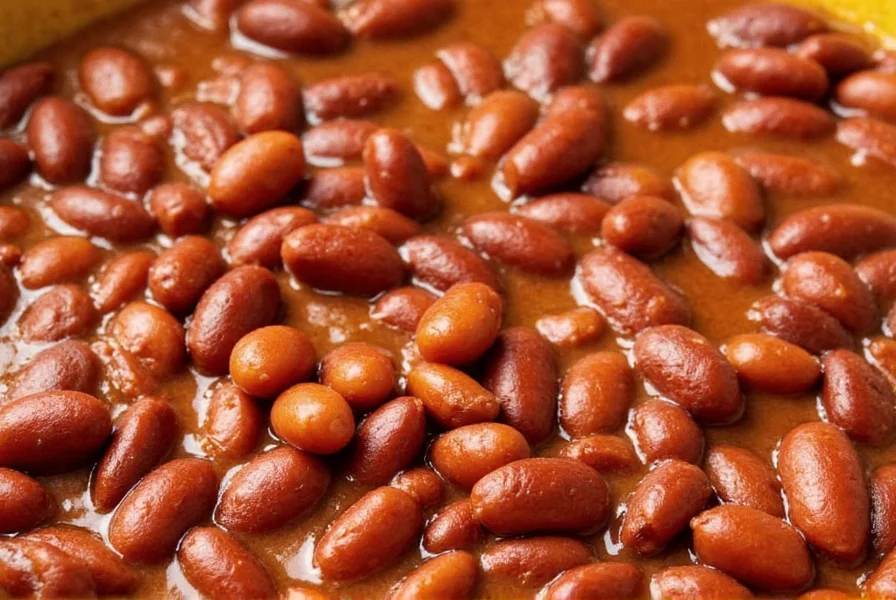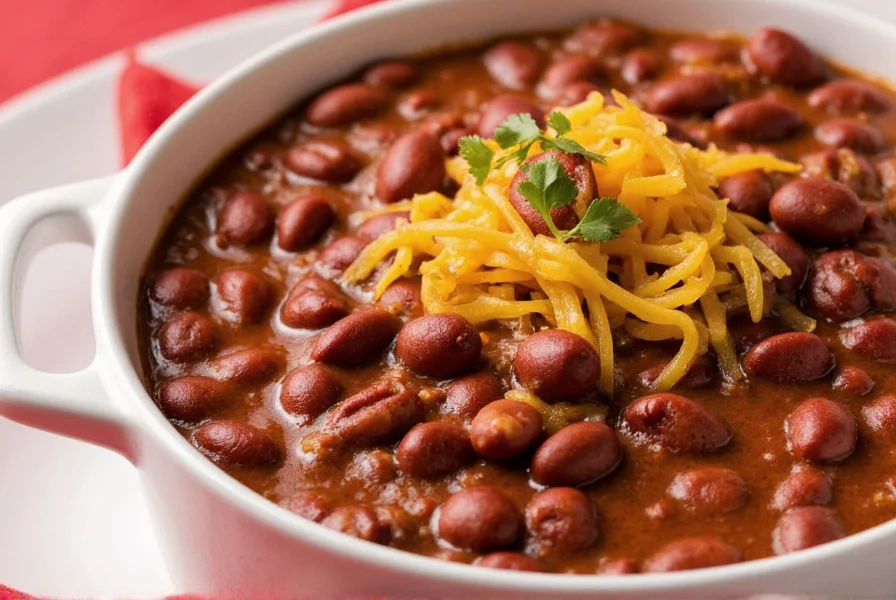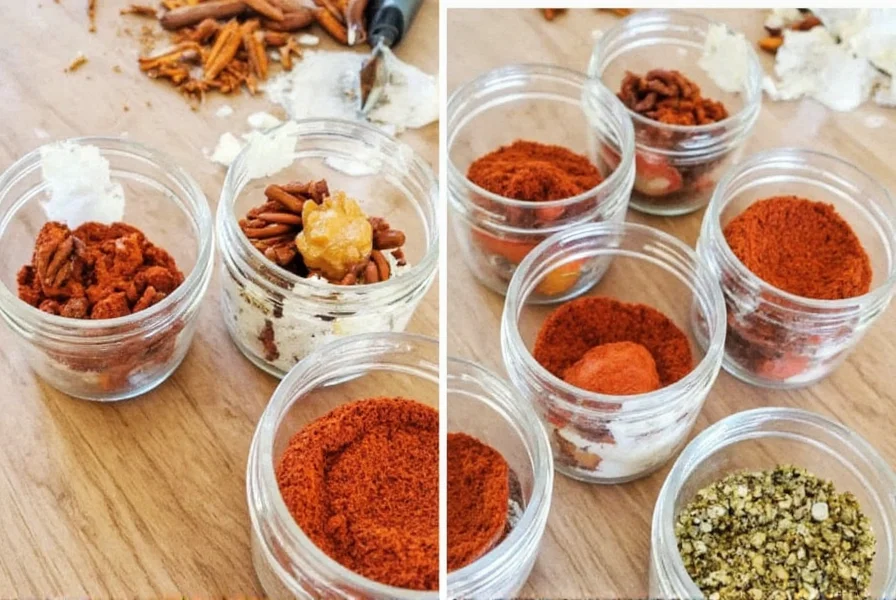The Ultimate Guide to the Best Chili Beans Recipe
There’s nothing quite like a steaming bowl of chili on a chilly evening. Whether you're hosting a game night or just craving comfort food, this best chili beans recipe promises bold flavors, smoky undertones, and a kick of heat that can be tailored to your taste. In this article, we'll walk you through everything you need to know to make the perfect batch of chili beans—from ingredient selection to cooking techniques, serving ideas, and even a handy buying guide.

Table of Contents
- Why You’ll Love This Chili Beans Recipe
- Key Ingredients in the Best Chili Beans Recipe
- Choosing the Right Beans for Chili
- Picking the Best Chili Peppers (Fresh, Dried, or Powder?)
- Step-by-Step Guide to Making the Best Chili Beans
- Pro Tips for Perfect Chili Every Time
- Creative Variations to Spice Up Your Chili
- Buying Guide: Essential Tools and Ingredients
- Frequently Asked Questions
- Final Thoughts
Why You’ll Love This Chili Beans Recipe
This chili beans recipe is the perfect balance of spicy, savory, and slightly sweet. It's versatile enough to suit both beginners and seasoned cooks, and it freezes beautifully for meal prep. The secret lies in layering flavors—starting with a rich tomato base, aromatic spices, and the right mix of beans and chilies.
Key Ingredients in the Best Chili Beans Recipe
Let’s break down the core components of this flavor-packed dish:
- Beans: Kidney, black, pinto, or a mix—more on this later!
- Meat: Ground beef is classic, but turkey, chicken, or plant-based options work too.
- Tomatoes: Use crushed tomatoes or fire-roasted for extra depth.
- Onions & Garlic: A must for building flavor from the start.
- Spices: Cumin, smoked paprika, chili powder, oregano, and cayenne are key players.
- Liquids: Beef broth, beer, or even coffee can add richness and complexity.
- Acidity: A splash of apple cider vinegar or lime juice balances everything out.
Choosing the Right Beans for Chili
Not all beans are created equal when it comes to chili. Here's a quick breakdown of the most popular types and why they work well:
| Bean Type | Texture | Flavor Profile | Best For |
|---|---|---|---|
| Kidney | Firm and meaty | Mild, earthy | Classic chili texture |
| Black | Creamy inside, firm skin | Sweet, earthy | Thick, hearty batches |
| Pinto | Softens during cooking | Buttery, nutty | Mellow flavor lovers |
| Great Northern | Tender, smooth | Mild, delicate | Chunky or blended textures |
Pro Tip
To save time, use canned beans. But if you want more flavor and texture control, try soaking and cooking dried beans ahead of time.
Picking the Best Chili Peppers (Fresh, Dried, or Powder?)
Chili peppers are where your recipe gets its signature bite. Let’s explore your options:
- Fresh Chilies: Jalapeños, serranos, or poblanos add vibrant heat and aroma. Roast them for a deeper flavor.
- Dried Chilies: Ancho, guajillo, or pasilla bring complex smokiness. Soak and blend them for a rich paste.
- Chili Powder: A convenient choice, often a blend of ground chilies, garlic, and cumin. Look for quality brands.
- Cayenne Pepper: Use sparingly—it packs serious heat!
Heat Scale Comparison
| Pepper | Scoville Heat Units (SHU) | Common Use |
|---|---|---|
| Bell Pepper | 0 | Color and crunch |
| Jalapeño | 2,500–8,000 | Moderate heat |
| Serrano | 10,000–23,000 | Spicier batches |
| Ancho (dried poblano) | 1,000–2,000 | Smoky depth |
| Cayenne | 30,000–50,000 | Intense heat boost |
Step-by-Step Guide to Making the Best Chili Beans
- Brown the Meat: Cook your ground beef or alternative protein until browned and crumbly. Drain excess fat.
- Sauté Aromatics: Sauté onions, garlic, and peppers until fragrant.
- Add Beans and Tomatoes: Stir in drained beans and crushed tomatoes. Add broth or beer to reach desired consistency.
- Season Generously: Mix in chili powder, cumin, smoked paprika, salt, pepper, and optional cayenne.
- Simmer Slowly: Let it cook low and slow for at least 45 minutes to an hour for deep flavor development.
- Adjust Seasoning: Taste and tweak as needed. A splash of vinegar or citrus lifts the flavors.
- Garnish and Serve: Top with shredded cheese, sour cream, green onions, or avocado.
Pro Tips for Perfect Chili Every Time
- Layer Flavors: Start with sautéing aromatics, then build with spices, tomatoes, and finally liquids.
- Use Fat Strategically: Don’t drain all the meat fat—it adds richness. Just skim off what feels excessive.
- Rest It: Letting chili sit for a few hours or overnight lets flavors meld beautifully.
- Don’t Rush: Simmering brings out depth. Low and slow is key.
- Freeze Ahead: Chili tastes better the next day—make a big batch and freeze portions for future meals.
- Balance Acidity: If your chili tastes flat, a dash of vinegar or lemon juice can brighten it up.
Creative Variations to Spice Up Your Chili
Want to put a twist on the classic? Try these fun variations:
- Tex-Mex Twist: Add corn, diced green chilies, and top with tortilla strips.
- White Chicken Chili: Use white beans, shredded cooked chicken, and green chilies instead of red sauce.
- Vegan Delight: Skip the meat and double up on beans or add jackfruit for texture.
- BBQ Style: Stir in a spoonful of BBQ sauce and top with coleslaw for contrast.
- Asian Fusion: Add ginger, soy sauce, sesame oil, and top with cilantro and pickled jalapeños.
- Beer-Braised: Swap broth for dark beer for a richer, maltier profile.

Buying Guide: Essential Tools and Ingredients
To master the best chili beans recipe, invest in quality tools and ingredients. Here are some top picks:
Essential Kitchen Tools
| Product | Features | Best For |
|---|---|---|
| Heavy Dutch Oven | Even heat distribution, retains warmth | Slow-cooking chili evenly |
| Immersion Blender | Easily puree sauces and pastes | Creating smooth chili bases |
| Cast Iron Skillet | Browns meat perfectly | Developing deep color and flavor |
| Storage Containers | Airtight, stackable design | Storing leftovers and freezing |
Top Shelf Ingredients
| Ingredient | Brand Recommendation | Flavor Benefit |
|---|---|---|
| Tomato Paste | San Marzano | Deep umami richness |
| Chili Powder | McCormick or Texas Brand | Consistent heat and flavor |
| Ground Cumin | Frontier Co-op | Earthy, warming backbone |
| Smoked Paprika | La Chinata | Rich, campfire-like depth |

Frequently Asked Questions
Can I make chili beans without meat?
Absolutely! Simply skip the meat and double up on beans or add mushrooms, lentils, or a plant-based ground substitute.
How long does chili last in the fridge?
Stored in an airtight container, chili lasts 3–4 days in the refrigerator and up to 3 months in the freezer.
Can I use frozen vegetables?
Yes, especially for onions, bell peppers, or garlic—but fresh will give better texture and flavor.
What’s the difference between chili con carne and chili beans?
Chili con carne specifically refers to meat-based chili, while chili beans may or may not include meat and emphasize bean varieties.
Is there a way to reduce the spiciness?
If your chili turns out too hot, add dairy (like sour cream or yogurt), a touch of sugar, or more beans to mellow the heat.
Final Thoughts
This best chili beans recipe is more than just a dish—it’s a comforting ritual that brings people together. With the right ingredients, tools, and a bit of patience, you can create a rich, satisfying pot of chili that suits every palate. From selecting the best beans and chilies to experimenting with creative twists, this guide gives you the freedom to play and personalize each batch.
So go ahead, grab your favorite spices, and get ready to impress your family and friends with your newfound chili-making skills. And remember—the best chili is the one you love making and sharing over and over again.










 浙公网安备
33010002000092号
浙公网安备
33010002000092号 浙B2-20120091-4
浙B2-20120091-4